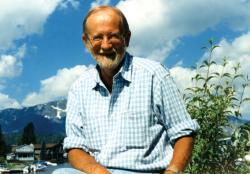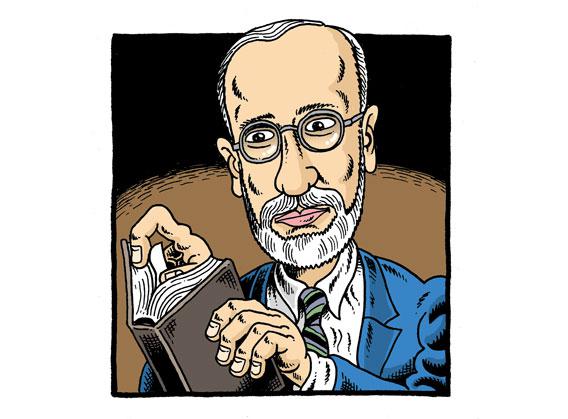Whenever you hear a child question whether journalistic criticism can sing with deep thought and high art, brandish a copy of John Leonard’s Reading for My Life and resist the urge to spank him with this canonical document. Take the humanistic approach instead. Open the volume at random and read aloud. If the child does not respond favorably to the pure music of this performance, then the child is uneducable, and it’s time for drastic action.
The book picks up 50 pieces of the amazing mind of the late John Leonard, who wrote with a great gift for rich reference; who peered through books with X-ray laser eyes; who read politics with clarity and passion, like the last principled urban liberal, as opposed to the wayward Third Way type; who ranks as the great critic of television—of the signal medium of the American experiment—precisely because he had read all the great books and most of the bad ones and that background helps to place both Twin Peaks and the ash heaps of cable news in high relief.
by John Leonard
Viking
Leonard wrote these pieces as a reviewer for the New York Times, as the television critic at New York, as the literary editor of The Nation, and as something or other everywhere else. “I like to think of myself as having published in the New York Review, the New Statesman, the Yale Review, and Tikkun,” he once wrote. “But there was also TV Guide.” He surveyed the Imperial City. His tag sometimes was Cyclops.
“I have more eyes than most flies,” he wrote in September of 2001. Before the reek of charred electronics had even cleared, he was sniffing out life in the new surveillance state and the putrid consensus manufactured by the feed: “After a couple of days of doing what they do best, which is grief therapy, the television networks and cable channels reverted to what they do worst, which is to represent the normal respiration of democratic intelligence.” Earlier, riffing on Ed Sullivan and his legacy and the squandering of it, he was characteristically prophetic. “As television expanded—let a hundred channels bloom!—the culture fell apart. It was as if the magic once so concentrated in a handful of choices had managed somehow to dissipate itself, like an expanding universe after the Big Bang, into chaos, heat, and fractals. … Who needs Ed when we can become famous for nothing more compelling than having already been on television?” He wrote that sentence in 1992, when the Real World/Road Rules Challenge was but a glimmer in the TV eye.
In the book’s introduction, E.L. Doctorow profitably references Frank Kermode: “Every piece of literary criticism rewrites the text it examines.” In that 9/11 piece, Leonard wrote that “our intellectual responsibility is to read our own minds.” The triumph of Leonard’s practice was to unite these principles in his performance. He called New Journalism “zoot-suited prose,” and his approach shares similarities with those reporters’. (Not incidentally, this book includes pieces on both Gay Talese and Tom Wolfe, both of whose suits get rumpled. Dismantling Thy Neighbor’s Wife, Leonard pans the me-decade decadence of the sexual revolution. Analyzing The Bonfire of the Vanities, he walks around the block in Sherman McCoy’s shoes and returns with fascinating insights about Wolfe’s insights on style.) Leonard tended to dress his own ideas in outfits that are less zooty than boho tending to wizardly. The many long list-sentences here play to incantatory effect—some like Beatnik shopping lists, some like Homer’s catalog of ships.
This greatest-hits package doubles—and triples and scores—as a history of global culture and American literature, as a shadow canon and an intellectual history. Here come the big boys: Robert Stone, Don Delillo, Thomas Pynchon; Richard Powers, Jonathan Lethem, Michael Chabon; Roth and Ellison; Mailer (but not Updike?); Toni Morrison and Joan Didion and Ms. Steinem. And, fine, I suppose there’s no way around finally cracking open Maureen Howard, after reading her described as “Mary McCarthy … grown up to be Nadine Gordimer.”
Fluttering off to Montreux to check the texture of time in Nabokov’s Ada, Leonard makes an explicit claim for his practice, for rescuing the master from the academy. “Why leave the explications to the exegetes? Or the execration to those radical critics who keep trying to put N. down as some sort of recidivistic White Russian ingrate?” Finding ideas in translation, he makes profitable trips to Palestine and Israel, to Egypt and South Africa, to magic realism as practiced behind the Iron Curtain and under a Fatwa. It is telling that the collection devotes little space to British writers—almost as if Julian Barnes and his friends never happened. The implication is that those chaps can look after themselves; this author was an American spirit.

Which reminds me: To use one of Leonard’s pet phrases—one of the constructions that looked like tics and tricks on the passing paper but sparkle in this book like leitmotifs—he died from putting burning leaves in his food hole. If we are to learn any lessons from this critic, the first should be that smoking kills.
So that covers the lungs. To understand other important rules, we move onto other vital organs. In a postscript to Reading for My Life, Leonard’s daughter shares some things that he, a baseball fan, taught her about guts. “You can always root for the underdog. … You always root against the Yankees. This rule may be modified, depending on the season and sport, to substitute the Dallas Cowboys, Notre Dame, or Duke.”
You feel on every page that Leonard took to heart Kurt Vonnegut’s idea about maintaining dignity and morality in criticism: “Any reviewer who expresses rage and loathing for a novel is preposterous. He or she is like a person who has put on full armor and attacked a hot fudge sundae.” But also it must be said that Leonard—filleting a golden calf or doing a drive-by take-down of a school of thought in a subordinate clause—could write in the style of a man who has brought a scimitar to a knife fight. Or consider the piece—titled “Smash-Mouth Criticism,” and not included here—in which he took up an epée to flick the ear of Dale Peck and suggested “some hard-won guidelines for responsible reviewing”:
For instance: First, as in Hippocrates, do no harm. Second, never stoop to score a point or bite an ankle. Third, always understand that in this symbiosis, you are the parasite. Fourth, look with an open heart and mind at every different kind of book with every change of emotional weather because we are reading for our lives and that could be love gone out the window or a horseman on the roof. Fifth, use theory only as a periscope or a trampoline, never a panopticon, a crib sheet or a license to kill. Sixth, let a hundred Harolds Bloom.
Because the culture has shattered—chaos, heat, fractals—Leonard’s achievement is unrepeatable. We might yet salvage the word unique from the barbarians. We need to, if only so that we can live in a place where a people properly understand this ultimate lesson of—and this is another pet phrase—the “delirious professions.” Here is a riff in the blazing Bonfire piece:
By the “delirious professions,” Paul Valéry meant “all those trades whose main tool is one’s opinion of one’s self, and whose raw material is the opinion others have of you.” In other words, Creative People, who in New York are not merely artists and writers, actors, dancers, and singers, but journalists, editors, critics, TV and radio producers, anchorpeople and talk-show hosts, noisy professors of uplift or anomie, vagabond experts on this week’s Rapture of the Deep at the 92nd Street Y, even (gasp) advertising account execs and swinging bankers and Yuppies in red suspenders on the Stock Exchange. Each is asked every minute of the day to be original: unique. Only then will they be lifted up by their epaulets to Steinbrenner’s box in the Stadium sky, there to consort with city presbyters the likes of the late Roy Cohn, where you can’t tell the pearls from the swine.
See all the pieces in the new Slate Book Review.
